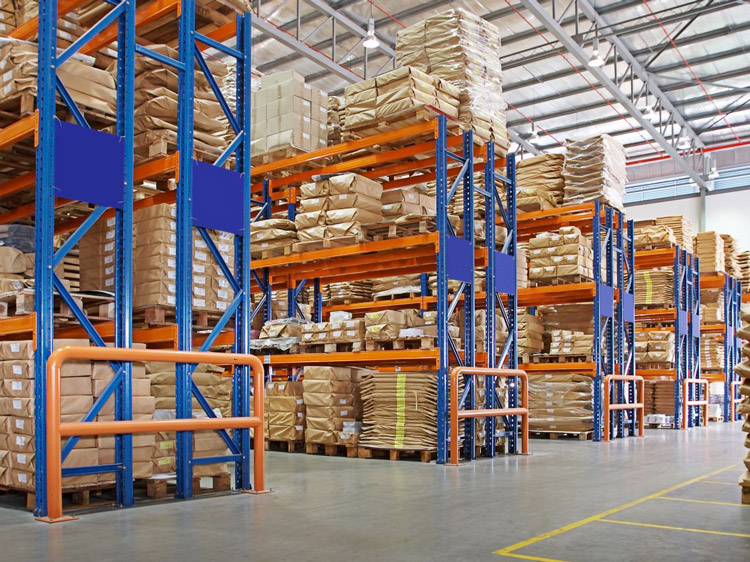High-density storage scenarios
✅Increased vertical storage:
When stored items have a high density and can be stacked safely, it allows for more pallets to be stored vertically in a selective pallet rack. For example, if the items are small-sized products packed in boxes on pallets, and the boxes can bear the weight of additional layers without damage, you can increase the number of pallets stored vertically. Let’s assume the standard height of a selective pallet rack bay is 8 feet and the height of a pallet is 6 inches. In a normal situation, you can store 16 pallets vertically. But if the items are more compact and can be stacked higher, say up to 8 pallets’ worth of height on each pallet, you could potentially store more pallets vertically, increasing the overall storage capacity.
✅ Narrow-aisle configurations:
High-density storage often involves using narrow-aisle forklifts or automated storage and retrieval systems (AS/RS). These systems can reduce the aisle width between selective pallet racks. For example, a traditional forklift-operated warehouse might have aisles that are 10 – 12 feet wide, but with a narrow-aisle forklift designed for high-density storage, the aisle width can be reduced to 5 – 6 feet. This reduction in aisle space means more floor area can be allocated to pallet racks, increasing the overall storage density and capacity of the warehouse.
✅ Use of specialized rack systems:
In high-density situations, drive in or drive through pallet racks can be used. These racks allow forklifts to drive into the rack structure to store and retrieve pallets. They eliminate the need for multiple access aisles between every row of racks. For example, in a drive – in rack system, pallets are stored in a last – in – first – out (LIFO) order. Multiple pallets can be stored deep within a single bay, which significantly increases the storage density compared to a traditional selective pallet rack system.
Low-density storage scenarios
✅ Reduced vertical storage:
If the stored items are bulky or have irregular shapes that prevent safe stacking, the number of pallets that can be stored vertically in a pallet rack is limited. For example, if you are storing large machinery parts on pallets, and the parts cannot be stacked on top of each other due to the risk of damage, you may only be able to store 1 – 2 pallets vertically in a bay. This reduces the overall storage capacity compared to a scenario where items can be stacked more densely.
✅ Wider aisle requirements:
Bulky or low-density items often require more space for forklift maneuvering. Larger forklifts may be needed to handle these items, which in turn requires wider aisles. For example, if you are storing large furniture pieces on pallets, you might need aisles that are 12 – 14 feet wide to allow the forklift to turn and position the pallets properly. The wider aisles mean less floor space is available for selective pallet racks, reducing the overall storage density and capacity.
✅ Inefficient use of rack space:
Low-density items may not fit well into standard selective pallet rack bays. There may be a lot of empty space around the items, especially if they have odd shapes. For example, if you are storing long pipes on pallets, and the pipes are not arranged efficiently, a significant amount of space in the pallet rack bay may be wasted. This inefficiency in space utilization further reduces the effective storage capacity of the pallet rack.
Post time: Apr-16-2025

